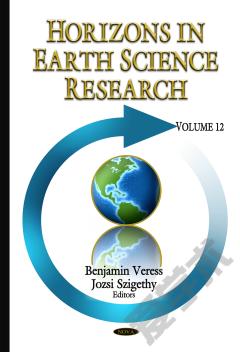Horizons in Earth Science Research. Volume 16
Chapter one reports the results of a radiometric survey performed at the main installations of DPM-Department of Petrology and Metallogeny of IGCE-Institute of Geosciences and Exacts Sciences belonging to UNESP, Rio Claro (SP), Brazil, whose major task has been to realize researches with crystalline rocks. The acquired dataset is presented and discussed in terms of possible implications for human health. Chapter two aims to map the spatial distribution of various land cover types at the surface of the Ghuwaymid sabkha using L1B ASTER data. Chapter three discusses if the zone of shearing is treated as a separate layer (Layer of Lateral Anisotropy and Mass Advection, LLAMA), it can remain isolated from the convecting mantle but be only partially attached to the overlying plate. As such it may serve as a long-lived shallow source for intraplate volcanism if it undergoes suitable metasomatic enrichment. Chapter four applies statistical and geochemical modeling techniques to an extensive major and trace element composition database for 86 samples from eight outcrops. A statistical comparison scheme applied to diverse geochemical ratios discards a genetic link between San Felipe volcanic ashes and regional contemporary magmatic localities. In Chapter five, Subsidence dolines are described. Additionally, the morphological environment of subsidence dolines of glaciokarst, the bearing cover, their size, their morphology and features of their activity are characterised. Chapter six provides new insight into the formation of high-grade precious-metal ores in low-sulfidation deposits. The chapter presents textural evidence for formation of electrum flocs in a boiling environment under epithermal conditions. Chapter seven suggests that a large low shear velocity province beneath Columbia would have triggered mantle plumes after the arrival of 2.0 Ga to 1.8 Ga active subducting slabs in the lower mantle. Columbia breakup attempt could have been started in such Large Igneous Provinces regions, where rifting processes may have occurred. Finally, Chapter eight examines what we define as legally relevant "outer space" and who has legal competence in space to begin with? These issues are considered in regard to potential outer space warfare: its legality, pros and cons, as well as its probability.
{{comment.content}}








 京公网安备 11010802027623号
京公网安备 11010802027623号